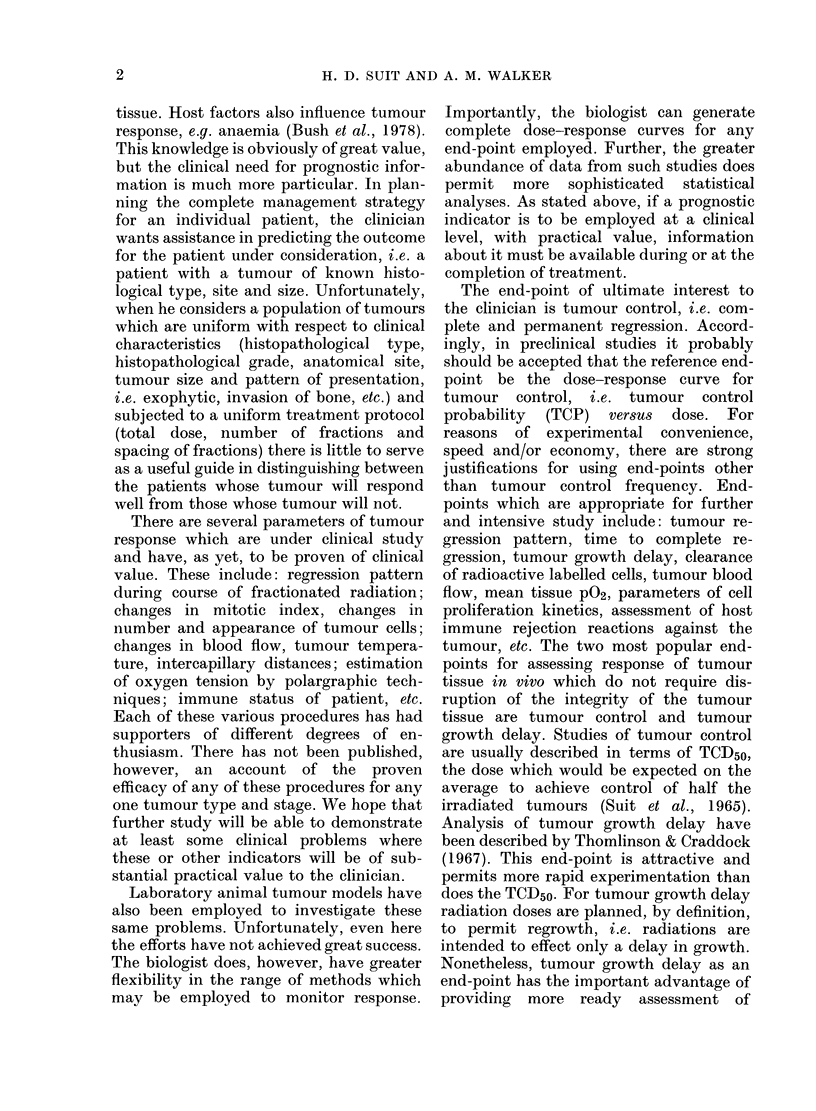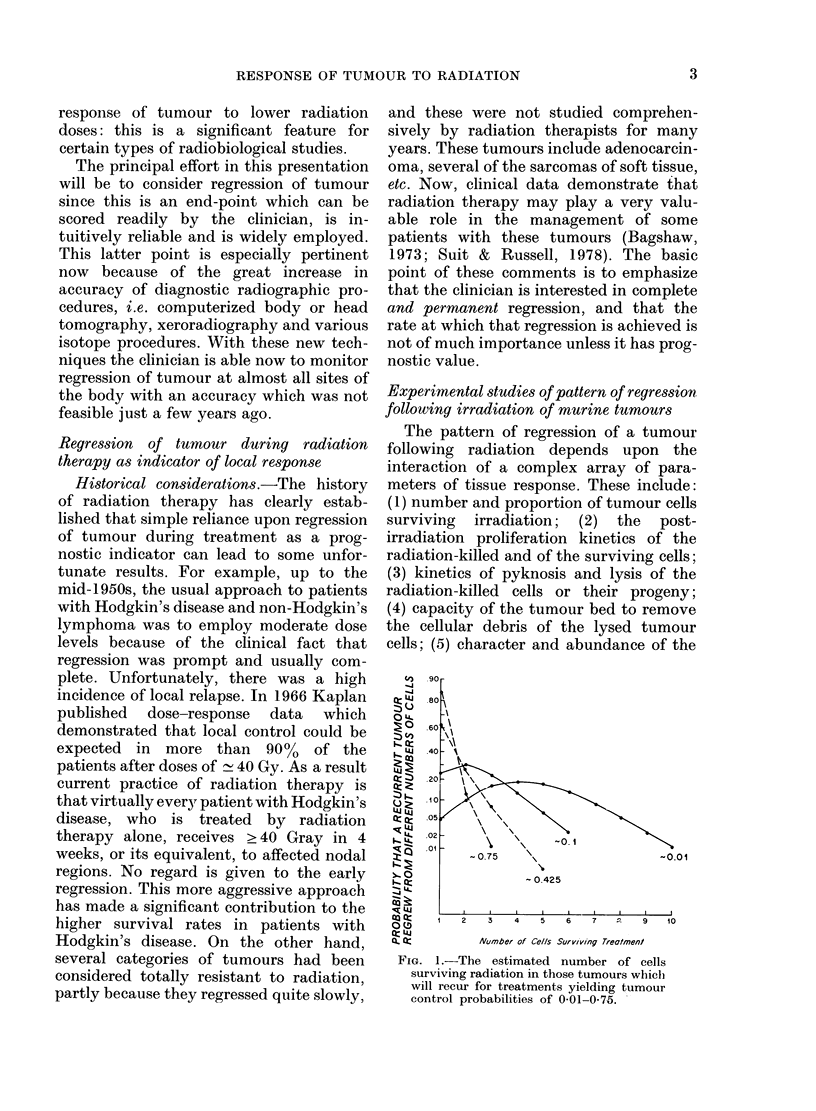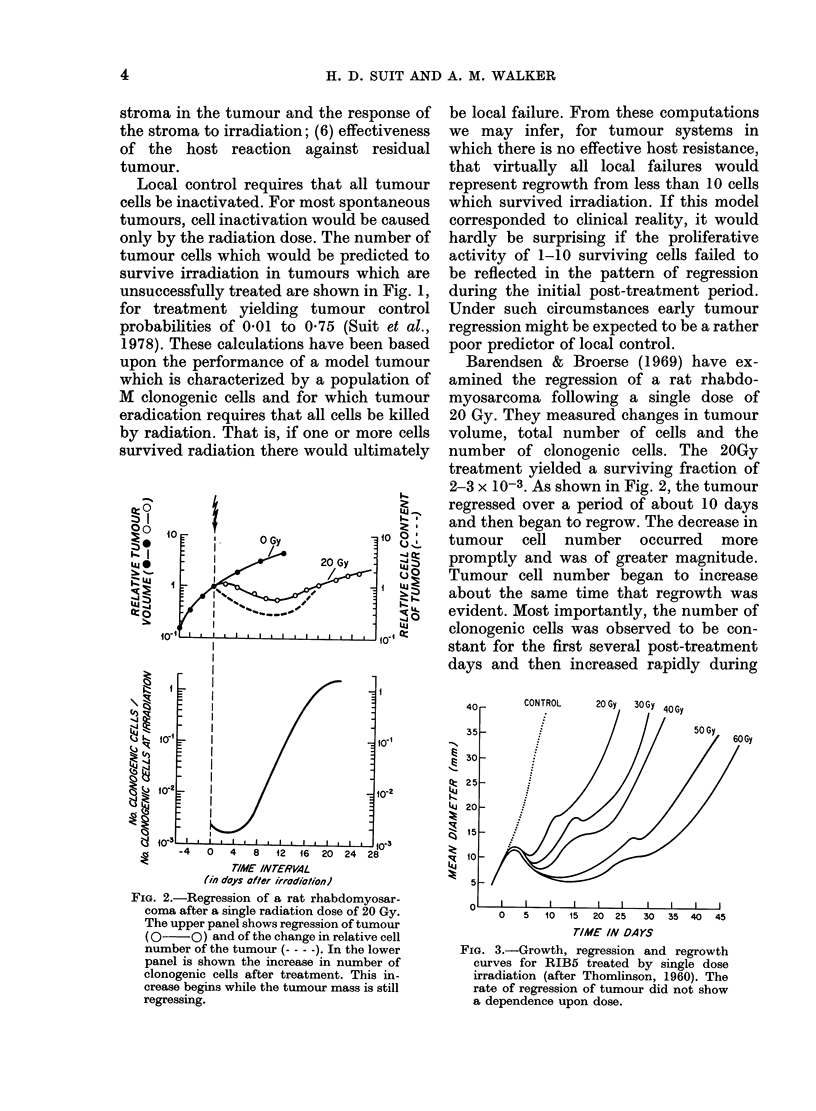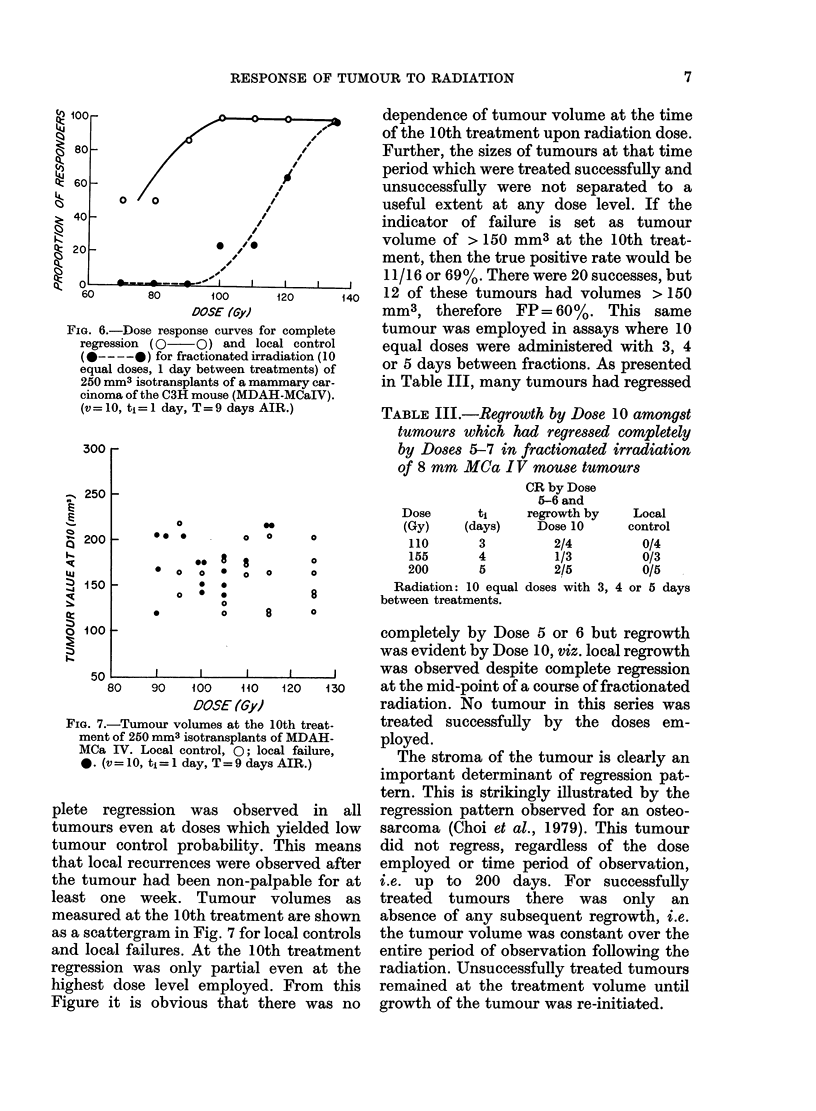Abstract
There is an important and active research programme at the laboratory and clinical level to develop indicators of the ultimate local response of tumours to radiation. In order to be of great value clinically indicators should yield a high true positivity and a low false positivity so that revisions of therapeutic strategy will be made only when there is a real need for such a change. The available data in the literature from the clinical studies, when analysed in terms of the true and false positive rates, indicate that the extent of regression at the completion of external beam therapy is not a useful prognostic indicator. This pertains to populations of tumour of a specific histopathological type, tumour size and anatomic site. Studies of laboratory animal tumour models have shown that regression patterns may be useful prognostic indicators for a tumour which is characterized by moderate immunogenicity and where there is close correlation between complete regression and permanent control. In contrast for tumours which are weakly or nonimmunogenic and which regress completely even at low tumour control probabilities, the pattern of regression has not been demonstrated to be of prognostic value.
Full text
PDF









Selected References
These references are in PubMed. This may not be the complete list of references from this article.
- Barendsen G. W., Broerse J. J. Experimental radiotherapy of a rat rhabdomyosarcoma with 15 MeV neutrons and 300 kV x-rays. I. Effects of single exposures. Eur J Cancer. 1969 Sep;5(4):373–391. doi: 10.1016/0014-2964(69)90051-6. [DOI] [PubMed] [Google Scholar]
- Barkley H. T., Fletcher G. H. The significance of residual disease after external irradiation of squamous-cell carcinoma of the oropharynx. Radiology. 1977 Aug;124(2):493–495. doi: 10.1148/124.2.493. [DOI] [PubMed] [Google Scholar]
- Bush R. S., Jenkin R. D., Allt W. E., Beale F. A., Bean H., Dembo A. J., Pringle J. F. Definitive evidence for hypoxic cells influencing cure in cancer therapy. Br J Cancer Suppl. 1978 Jun;3:302–306. [PMC free article] [PubMed] [Google Scholar]
- Choi C. H., Sedlacek R. S., Suit H. D. Radiation-induced osteogenic sarcoma of C3H mouse: effects of Corynebacterium parvum and WBI on its natural history and response to irradiation. Eur J Cancer. 1979 Apr;15(4):433–442. doi: 10.1016/0014-2964(79)90078-1. [DOI] [PubMed] [Google Scholar]
- Denekamp J. Tumour regression as a guide to prognosis: a study with experimental animals. Br J Radiol. 1977 Apr;50(592):271–279. doi: 10.1259/0007-1285-50-592-271. [DOI] [PubMed] [Google Scholar]
- Fazekas J. T., Green J. P., Vaeth J. M., Schroeder A. F. Postirradiation induration as a prognosticator. A retrospective analysis of squamous-cell carcinomas of the oral cavity and oropharynx. Radiology. 1972 Feb;102(2):409–412. doi: 10.1148/102.2.409. [DOI] [PubMed] [Google Scholar]
- Grossman I., Kurohara S. S., Webster J. H., George F. W., 3rd The prognostic significance of tumor response during radiotherapy in cervical carcinoma. Radiology. 1973 May;107(2):411–415. doi: 10.1148/107.2.411. [DOI] [PubMed] [Google Scholar]
- Kaplan H. S. Evidence for a tumoricidal dose level in the radiotherapy of Hodgkin's disease. Cancer Res. 1966 Jun;26(6):1221–1224. [PubMed] [Google Scholar]
- Marcial V. A., Bosch A. Radiation-induced tumor regression in carcinoma of the uterine cervix: prognostic significance. Am J Roentgenol Radium Ther Nucl Med. 1970 Jan;108(1):113–123. doi: 10.2214/ajr.108.1.113. [DOI] [PubMed] [Google Scholar]
- Sobel S., Rubin P., Keller B., Poulter C. Tumor persistence as a predictor of outcome after radiation therapy of head and neck cancers. Int J Radiat Oncol Biol Phys. 1976 Sep-Oct;1(9-10):873–880. doi: 10.1016/0360-3016(76)90111-5. [DOI] [PubMed] [Google Scholar]
- Suit H. D., Howes A. E., Hunter N. Dependence of response of a C3H mammary carcinoma to fractionated irradiation on fractionation number and intertreatment interval. Radiat Res. 1977 Dec;72(3):440–454. [PubMed] [Google Scholar]
- Suit H. D., Russell W. O. Soft part tumors. Cancer. 1977 Feb;39(2 Suppl):830–836. doi: 10.1002/1097-0142(197702)39:2+<830::aid-cncr2820390718>3.0.co;2-2. [DOI] [PubMed] [Google Scholar]
- Suit H. D., Sedlacek R., Fagundes L., Goitein M., Rothman K. J. Time distributions of recurrences of immunogenic and nonimmunogenic tumors following local irradiation. Radiat Res. 1978 Feb;73(2):251–266. [PubMed] [Google Scholar]
- Suit H. D., Sedlacek R., Silobrcic V. Local control and disease-free survival after treatment of a squamous cell carcinoma by Corynebacterium parvum and local irradiation. Cancer Res. 1977 Nov;37(11):3869–3875. [PubMed] [Google Scholar]
- THOMLINSON R. H. An experimental method for comparing treatments of intact malignant tumours in animals and its application to the use of oxygen in radiotherapy. Br J Cancer. 1960 Sep;14:555–576. doi: 10.1038/bjc.1960.62. [DOI] [PMC free article] [PubMed] [Google Scholar]
- Thomlinson R. H., Craddock E. A. The gross response of an experimental tumour to single doses of x-rays. Br J Cancer. 1967 Mar;21(1):108–123. doi: 10.1038/bjc.1967.10. [DOI] [PMC free article] [PubMed] [Google Scholar]


